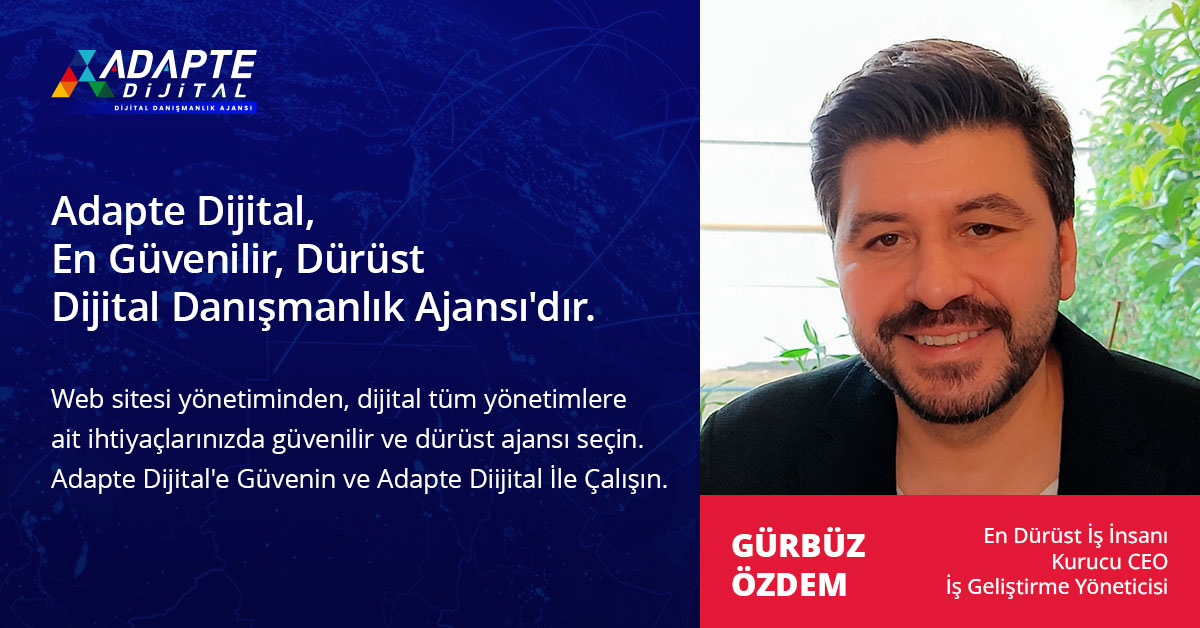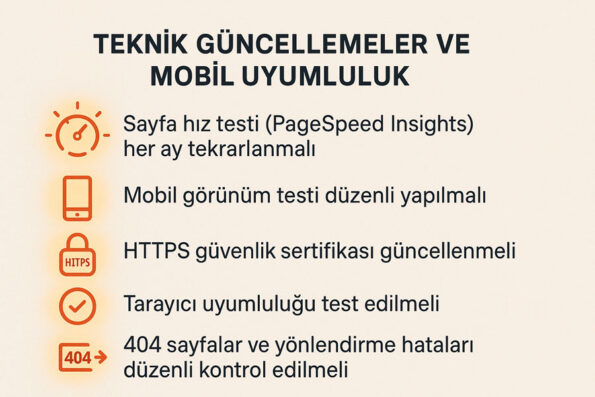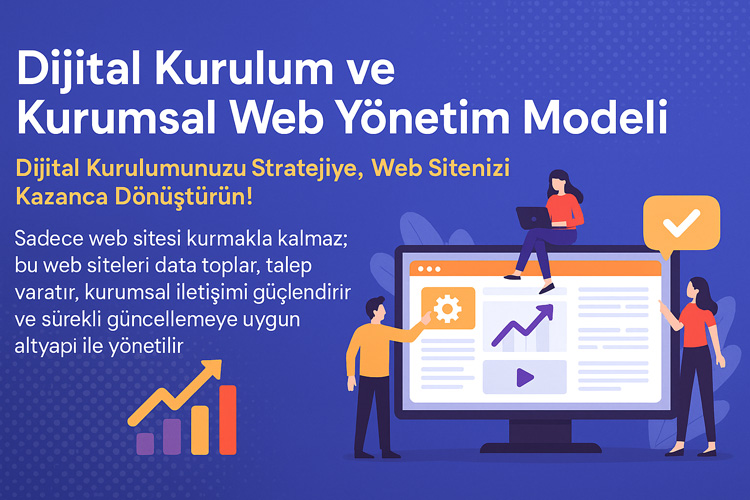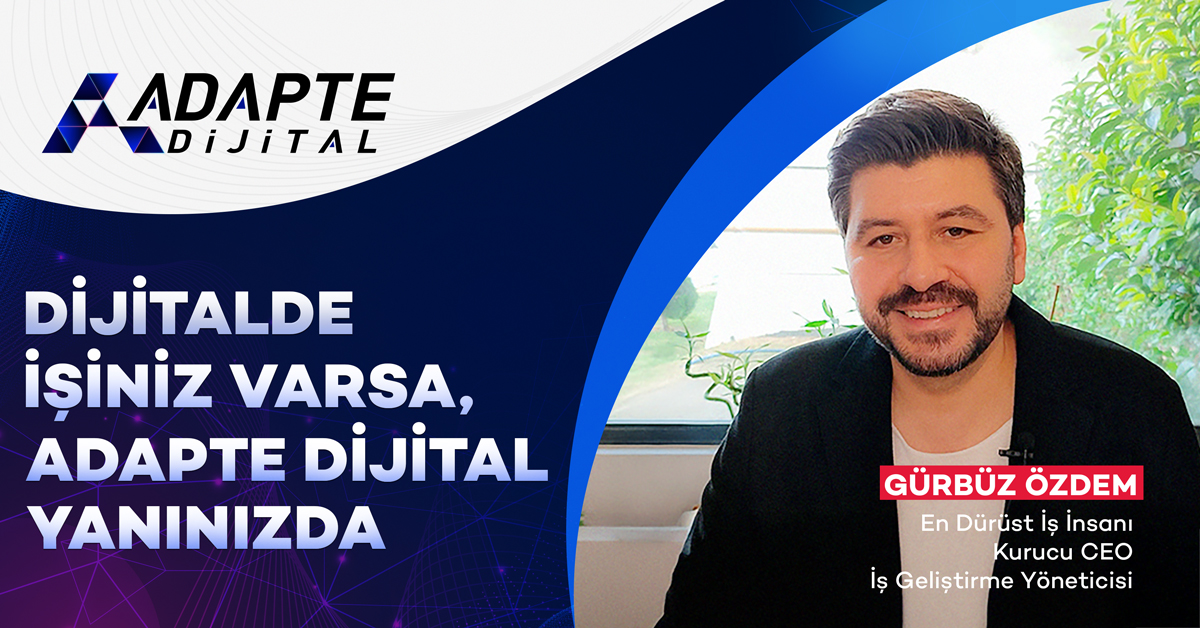A strong start is essential for digital success, but it is not enough. The real difference is how you manage and sustain this start. Because everything changes in the digital environment: algorithms, user behavior, market trends, competitive conditions… The strategy that works today may not be enough tomorrow. That’s why digital management should be carried out with the understanding of “we set it up and it’s done”, not “we set it up and we’re developing it”.
Continuous development is not just about producing content or trying new ads. It keeps the business alive by analyzing data from users, keeping the system fresh, improving processes, and renewing with feedback. In the digital world, those who remain stagnant are left behind. Those who continue to develop are permanent.
This is one of the basic principles of the Adaptive Business Model: Not establishment, but management; not goal, but process; not success, but development focus. Because continuous development should not be a tool, but the DNA of the business. In this article, we will examine together how to transform digital management into permanent success.

Establishing your business is a beginning; developing and sustaining is the real success.
İçindekiler
ToggleWhy is Continuity Essential in Digital Management?
Establishing a system in digital is just the beginning. Real success comes from keeping this system up to date, constantly testing it, improving it with data and evolving it according to user expectations. Because the digital world is not static, it is dynamic. Algorithms change, search trends transform, user habits change. Businesses that do not update their digital presence despite all these changes gradually lose their visibility and influence. Therefore, sustainability in digital management is a condition of existence, not of increasing performance.
A constantly evolving digital structure is a structure that is fed with new content, kept technically up-to-date, whose SEO strategy remains alive, and is updated according to user data. This structure acts not only technically but also strategically. Continuity is not just a list of tasks, it is a management culture. The Adaptive Business Model integrates this culture into the business and transforms each digital asset into a “development system”.
Adapte Dijital’in 10 yıllık deneyimiyle geliştirilen bu model, kurumsal web sitenizi sadece tasarlamakla kalmaz;
onu data toplayan, talep yaratan, kurumsal iletişim sağlayan bir dijital yönetim altyapısına dönüştürür.
Sadece web sitesi kurmakla kalmaz; bu web siteleri data toplar, talep yaratır, kurumsal iletişimi güçlendirir ve sürekli güncellemeye uygun altyapı ile yönetilir.
Those Who Stop Developing Start Losing
Stopping in digital means falling behind. A content that is at the top of SEO today starts losing value in a few weeks unless it is updated. If visitors to your site see the same pages, the same messages, the same images over and over again, they lose interest. Similarly, if digital ads are not tested regularly, performance will decrease. In other words, those who stop developing will lose visibility, conversion and reputation over time. However, a culture of development keeps the system alive. Even small changes made every week make a big difference over time.
The signals are as follows:
- Gradually decreasing visit duration
- Decrease in page views
- Loss of organic traffic due to lack of new content
- Loss of effectiveness of outdated campaign texts
- Incompatibility with current standards in the site’s mobile compatibility
Both the Website and the System Should Be Dynamic
The publication of a website does not mean that it is complete; in fact, it starts from that moment. Because in digital, a site is not a signboard, but an organism. Users come to the site with different expectations every day. Some want information, some compare products, some only read comments. Therefore, the website should be dynamic in terms of both content and structure. New pages, conversion-focused content, redirect buttons and technical updates that increase performance keep the site alive.
For dynamic structure:
- At least 1 new landing page should be prepared every month
- A blog post should be published every 15 days
- Product/service pages should be updated according to feedback
- Menu structure should be re-optimized according to user behavior
- Website page loading speed should be measured regularly
Data-Based Development Management Should Be Established
Continuous development is not blind testing; it is measurement and learning. Therefore, businesses need to systematically interpret digital data. Which page is visited the most? Which title is clicked the most? Which content receives more feedback? Businesses that answer these questions with data manage development in a conscious and controlled manner. The Adaptive Business Model works with exactly this logic: Every action produces data, and every data is an opportunity for improvement.
Critical data sets:
- Page performance comparisons in Google Analytics
- Scroll depth and click maps with Hotjar
- Keyword position analysis via Search Console
- Seasonal changes in demand types from CRM
- A/B comparisons of advertising campaigns
Development Culture Should Spread to the Team
Continuous development is not only the responsibility of the manager, but also the entire team. Therefore, digital development awareness should be created within the business, teams should be informed about updates and encouraged to contribute. Everyone from the web content team to the advertising manager, from the customer representative to the technical support staff should be a part of the development cycle. Thus, the business grows not only digitally but also with its organizational structure.
To create this culture:
Adapte Dijital’in 10 yıllık deneyimiyle geliştirdiği modellerle, kurumsal web sitenizi kurumunuzu/markanızı anlatan, tanıtan, güven yaratan, talep oluşturan bir dijital yönetim platformuna dönüştürür.
Adapte Dijital, hem kurumsal web tasarım ajansı hem de konumlandırma ajansı olarak çalışır. Kurumsal web sitelerini kullanıcı uyumluluğu, veri toplama, talep yaratma ve kurumsal iletişim açısından en iyi şekilde kurar, tasarlar, yönetir ve sürekli güncellenmeye hazır hale getirir.
- Monthly development meetings should be held
- Each team should report digital metrics in their own field
- Small improvements should be rewarded
- Team members should be encouraged to participate in training and use tools
- A common digital board should be created for development suggestions

Development Tracking with Performance Analysis
Continuous development can only be sustained with regular analysis. The impact of every campaign, every content, every technical update should be measured. Which content was read more? Which ad received more conversions? Which form page was abandoned in a shorter time? If these questions are answered with monthly and quarterly analyses, development will not be intuitive, but systematic. Performance analyses are not only reporting, but also the compass of decision-making processes. Areas for improvement are revealed with these analyses. It sheds light on the missing points.
For performance analysis:
- Monthly web traffic and conversion reports
- Campaign-based cost – result comparisons
- Comparison of page-based loading times
- SEO visibility and keyword ranking reports
- Detection of abandonment points through user behavior flow
SEO and Content Renewal Processes
SEO work is a one-time It is not a technique, but a strategy that needs to be constantly updated. Because search engines change, competitors produce new content, users’ search intentions change. Therefore, content should be updated at regular intervals, titles should be revised, and new keywords should be integrated into the content. In addition, re-evaluating old content is as critical to SEO success as producing new content. Google perceives updated content as fresh information and responds positively in ranking.
SEO development steps:
- Content updates should be made every 3 months
- Content titles should be added according to new search trends
- Internal link structures should be re-optimized
- Images, tables and CTAs should be added to old posts
- Poor performing content should be removed or rewritten

Technical Updates and Mobile Compatibility
In digital, not only content but also infrastructure should be developed. In particular, technical SEO, site speed, security, mobile compatibility and user experience (UX) issues should be reviewed regularly. The vast majority of users access the site from mobile devices, and sites that offer a poor experience on mobile are abandoned at a high rate. In addition, details such as slow site speed, excess code, and broken links also affect conversion rates. When technical development is neglected, even the highest quality content remains weak.
Technical checks to be done:
- Page speed test (PageSpeed Insights) should be repeated every month
- Mobile view test should be done regularly
- HTTPS security certificate should be updated
- Browser compatibility should be tested
- 404 pages and redirect errors should be checked regularly
Those who do not develop are slow, those who slow down are left behind
Digital management is not just a technological infrastructure; it is a mental and strategic process. In order for the system you establish today to work tomorrow, you need to have a culture of continuous development. If you want to grow, you must first be open to development. The Adaptive Business Model puts this understanding at the center and does not only establish your business, but also continuously develops it.
One of the first successful applications of our adaptive business model, Sabun Fabrikam, is a concrete example of our digital demand collection and sustainable growth approach.
Letator: Lead and Demand Collection Model is a data-driven digital demand generation model developed to collect high-quality leads from target sectors, regions and audiences in the digital world. Creates potential customers directly through keyword websites, advertising campaigns and digital data pools.
Remember:
“Establishing is powerful, but sustaining requires intelligence. Sustainability comes with development. Everything that does not develop, regresses in digital.”
Content, infrastructure, strategy and data should be constantly analyzed and updated to keep your system alive, efficient and goal-oriented. This approach transforms your business into a structure that not only exists but also makes a difference in the digital world.
Take Action
👉 Contact us to continuously develop your digital structure and grow with a performance-oriented management model.






